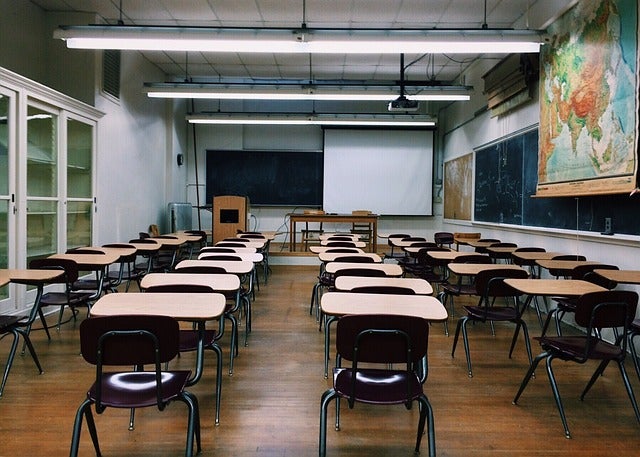Budget set for Prince Edward schools. Here’s a look at the priorities
Published 5:38 am Saturday, April 26, 2025
|
Getting your Trinity Audio player ready...
|
The Prince Edward School Board has voted to approve next year’s budget. Now they’re waiting to see what option county supervisors choose, in terms of the tax rate. The board unanimously adopted their budget during a Wednesday, April 16 meeting, getting a presentation on the impact state and federal changes have had for Prince Edward schools.
The budget will be funded mainly through a combination of federal, state and local tax dollars. It’s also higher than last year, but with few new projects. Instead, a significant part of the increase is built around teacher pay, higher costs and debt service, setting money aside to help pay for the current renovations at Prince Edward Elementary. This year, the budget was set at $31,757,712. The school district’s planned budget for the coming year is $33,014,882, an increase of $1,257,170.
Some of the major priorities included in the planned budget include $1,469,203 for a 3% raise for teachers, that also includes a pay step increase. Just like counties and towns, health insurance costs are going up for the district, to the tune of $169,560. The district also wants to switch school counselors from a 10-month salary scale to a 12-month scale, which will cost an extra $7,127. The school board also wants to bring in Evergreen Solutions LLC to do a salary scale review across the entire district, to see if other salaries need to be adjusted. That will cost $42,500. Prince Edward needs a career technical education (CTE) principal, at a cost of $160,940; $83,727 for equipment and a teacher’s salary for the new HVAC courses they want to add in the CTE program. The school board also wants to continue with offering $2,500 sign-on bonuses for hard to staff positions.
There’s also a number of costs simply increasing for Prince Edward schools. The maintenance budget is going up from $1,983,843 to $2,033,049, for example. Transportation costs, including fuel, are going up from $2,168,879 to $2,229,563. Even food service costs are climbing, going up from $1,954,000 this year to $2,004,800.
State and federal funding for Prince Edward schools
And as mentioned, it’s paid for in three ways. First, with an anticipated $2,108,343 in federal dollars, provided through the Title I (Improving Basic Programs), Title II (Supporting Effective Instruction), Title III (English as a Second Language), Title IV (Student Support and Academic Enrichment) and TItle V (Title V (Rural and Low-Income Schools) programs. That amount is $15,475 less than what was given during the current year.
Then there’s the state budget. In Virginia, school districts receive funding based on two things. The first is the number of students. Second is the composite index, which identifies the ability of a community to pay education costs with local funds. That’s calculated based 50% on the property values of an area, 40% on the adjusted gross income of the community and 10% on taxable retail sales. This year, the state paid $17,752,252 to Prince Edward. For the upcoming budget year, that’s projected at $18,137,102, good enough for a $385,850 increase.
The state funds are allocated in four sections and so that’s what we’re doing, going one at a time to detail what gets spent where.
First up, lottery funds. That money will go to fund at-risk student programs, early reading intervention, mentor teacher programs, support to reduce the size of classrooms from kindergarten through third grade, materials to help prepare students for the Algebra SOL (Standards of Learning) test, Career and Technical Education, Project Graduation, infrastructure and operations, as well as foster care programs. Up next, the Standards of Quality Funds. Those go to cover basic aid, textbooks, vocational education, special education, English as a Second Language, other at-risk programs and remedial summer school. Third are the incentive program funds, with the goal of attracting teachers and staff. Those fund compensation supplements. State money also goes to fund the Virginia Preschool Initiative here.
And now, about the local dollars
Now we come to the part paid for by Prince Edward County. This year, the county provided $10,989,342 in funding and $522,279 in debt service for the school district. Supervisors are considering increasing that for this upcoming budget, bringing it to $12,239,342 in funding and $529,449 for debt service. We say considering because county supervisors have not yet voted to approve the tax rate or their own budget.
The local contribution of counties both here and across the Commonwealth is something that’s been flagged by multiple studies as being too high. A Joint Legislative Audit and Review Committee (JLARC) report, done by the Assembly’s own researchers, found that Virginia’s method of doling out money for secondary education places too much burden on localities. The JLARC report shows Virginia school divisions receive less K–12 funding per student than the 50-state average, the regional average, and three of Virginia’s five bordering states.
“School divisions in other states receive 14% more per student than school divisions in Virginia, on average, after normalizing for differences in cost of labor among states,” the JLARC stated in its findings. “This equates to about $1,900 more per student than Virginia.”
But it doesn’t appear that will change any, with the Assembly majority rejecting proposals to change the funding formula or how it’s developed.






